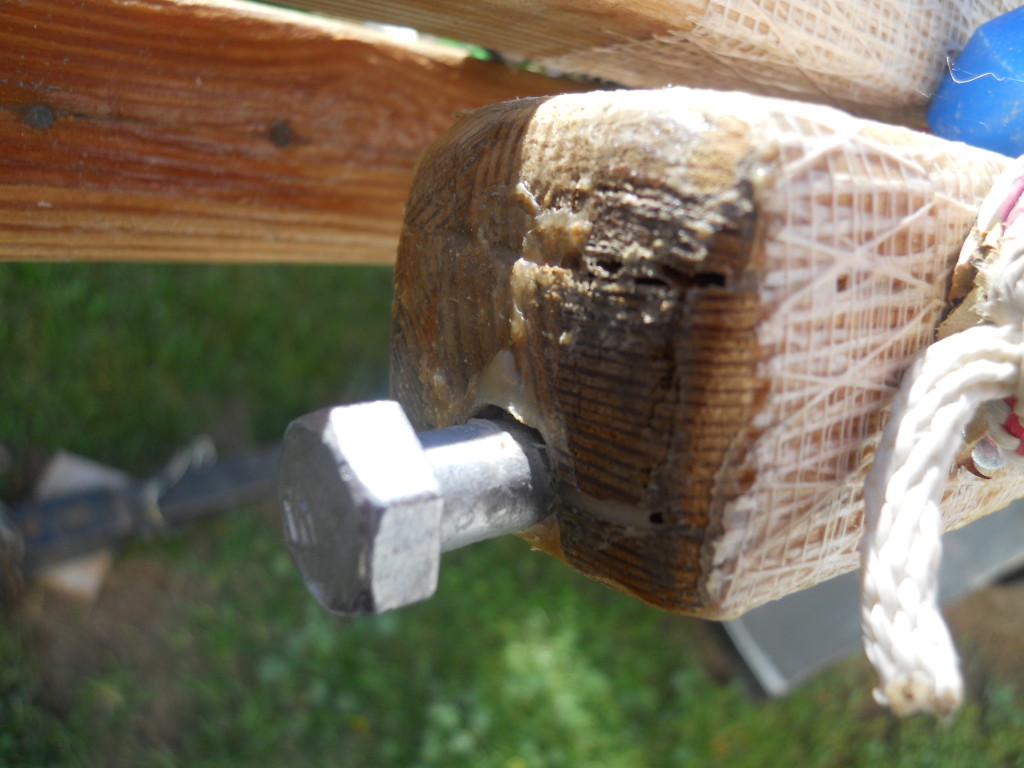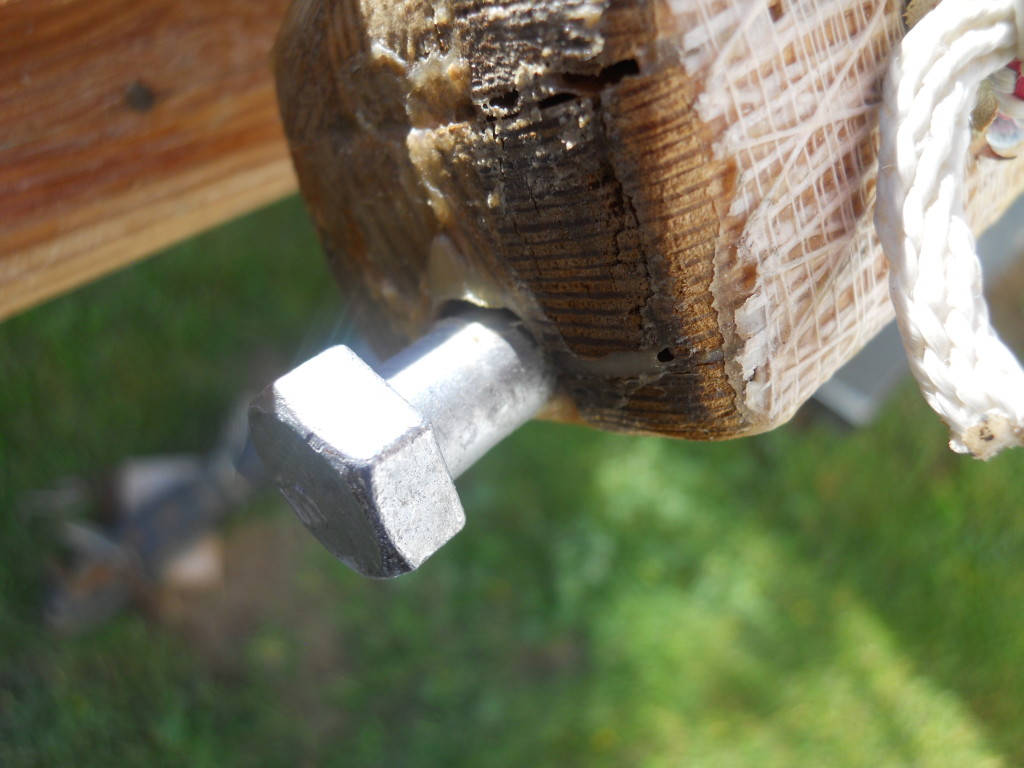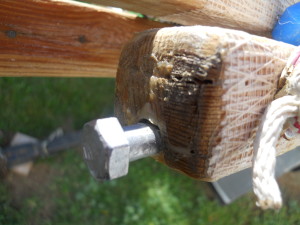A few weeks ago, I repaired the top of my mast. The fix was pretty straightforward, I took a bit of Titebond II, some sawdust and some wheat flour and used it to replace a big chip out of the top of my mast. I then wrapped the whole thing with Fibatape and glued that down as well.
I wasn’t at all sure that it was going to work, but I did hope to get at least one more sailboat outing out of it.
In that regard the repair was a complete success. I took most of my kids on what was probably the best sailboat outing of the year. The strong winds also made for an excellent test of the repair, as I pushed the boat about as hard as I could.

On closer inspection it appeared that my worst fears were realized. The lag screw at the top of the mast appeared to be pulling away from the wood.


One of the fun things about building and sailing a home made boat is that you get to learn quite a bit about the materials that you end up using. I have pushed Titebond II pretty hard in both of my boats, mostly because it is safe enough to use with kids, and inexpensive enough to fit my budget. I am pretty sure that I wouldn’t have this problem if I had fixed the mast with epoxy. Epoxy would have set up hard enough so that it was harder than the surrounding wood. Titebond II and wheat flour, on the other hand, appear to be relatively malleable. The question remains as to whether or not it is hard enough.
I think with a little protection the likely answer is that it is hard enough for me.
I am going to try and get the lag screw out then I will add a washer, and glue the lag screw back into place. That should protect the top of the mast. While the screw is out I think that I am going to also spend the time to sand the top of the mast fair again, and then treat the entire mast. I have been too busy actually sailing to even oil the mast. So it is not completely surprising that it looks rough.
I am not sure how I am going to finish the mast (and the rest of the bare wood on the boat. Originally I was going to oil the wood with used motor oil. I actually made a piece of a test spar that I treated that way and left outside, and it still looks great. More recently, however, I have been leaning toward using Titebond II, either as a primer for white paint (which I know works great) or as a varnish all by itself. The parts of the boat that I finished with Fibatape and Titebond II actually look very good, and Titebond II is supposed to be quite UV resistant.
If you have any suggestions I would be interested to hear about them. I am not particularly interested in finish strategies that require 700 layers or any covering more expensive than white exterior latex though. My spars actually look pretty good two years in without any protection at all. I am not interested in finishes that cost significantly more than the 2×6 that I had to buy to make the spars, or that take more time to apply than it took to take the mast (a few hours over 2 days). If I am going to spend that kind of money or time I probably should just rebuild the mast when I wear this one out.
